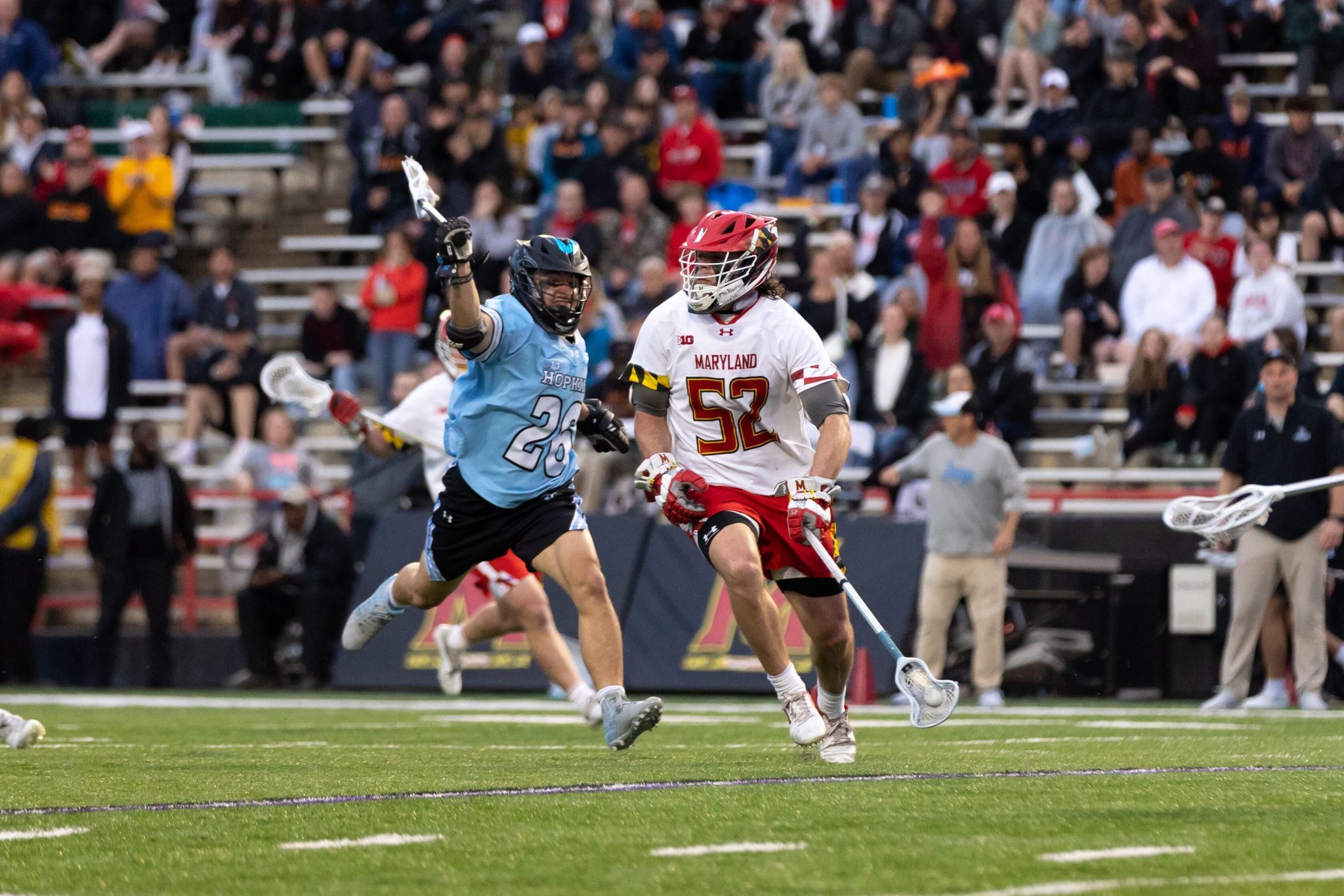A victory for No. 4 Maryland men’s lacrosse in its regular season finale against No. 7 Johns Hopkins would’ve given the Terps a week off and the top seed in the Big Ten tournament.
The contest featured nine lead changes and 11 ties in a back-and-forth battle. But the Blue Jays squeaked by their in-state rival, dropping the Terps to the three-line for the conference tournament and taking away their first round bye opportunity.
“Offensively we just never really got into a great flow, I thought we had some silly turnovers and some short possessions,” coach John Tillman said. “Didn’t really handle the pressure particularly well. I felt like our decisions in transition, we had some really empty possessions there … our transition defense was not great.”
Maryland has a shot at revenge Thursday when it takes on Johns Hopkins in the Big Ten semifinals on the Blue Jays’ home turf. For the Terps to have a better outcome in the second meeting this season, they’ll need to improve on both sides of the ball. That stems from faceoff specialist Luke Wierman.
The 2023 All-Big Ten First Team member holds the seventh-best faceoff winning percentage among all Division I players this season but struggled against Johns Hopkins. He won fewer than 50 percent of his faceoffs for just the third time this season.
[Maryland men’s lacrosse’s trio of star attackers pushed it to a Big Ten quarterfinal win]
Wierman has had back-to-back subpar performances against the Blue Jays dating back to last year, when he secured just 10 of 22 opportunities in a Big Ten semifinals matchup. Tyler Dunn, Johns Hopkins’ faceoff specialist, has found success over Wierman in their individual matchups.
Dunn won more than 56 percent of his 30 career faceoffs against Wierman, and has won 64 percent of the faceoffs over his past two games against the Terps.
“If we lose a few faceoffs, and [Johns Hopkins has] the ball, that defense is going to get gassed and get tired,” Tillman said. “And I felt like we did get gassed and we did get tired [in the first meeting]. We just can’t do that.”
Maryland has relied heavily this season on Wierman’s ability to win a high percentage of faceoffs, as its offensive efficiency — goals per possessions — is 36th among all Division I schools.
The result is an offense that’s been largely run-heavy; the Terps have gone on multiple three-goal spurts in all but two of their victories this season and have had at least one three-goal run in every win.
[No. 4 Maryland men’s lacrosse falls to No. 7 Johns Hopkins in regular season finale, 12-11]
Seven of Maryland’s 11 goals versus Johns Hopkins came off a previously-secured faceoff by Wierman. The Terps dealt with issues when trying to create offense otherwise, and their defense suffered as well.
The senior lost five of the eight second-half faceoffs that ensued a Johns Hopkins goal, allowing the Blue Jays to overcome a halftime deficit in their win. The Terps’ defense was on the field more due to Wierman’s shortcomings.
Johns Hopkins holds the sixth-highest average time of possession in the nation. Half of the Blue Jays’ 12 goals in the meeting last month came with the shot clock more than halfway through. All six of those scores occurred in the second half.
“You have to make sure that on defense, you’re ready for an 80-second possession,” Tillman said. “You have to communicate well, you have to communicate picks, you’ve got to have good approaches … you’ve got to stay focused and you’ve got to be detail oriented.”
The Terps have had some lapses on the defensive end this season. They’ve allowed a five-goal frame in two of their four losses; Wierman holds a combined 35 percent faceoff conversion rate in those periods and won just two faceoffs out of Johns Hopkins’ six third-quarter scores earlier this season.
Wierman’s impact for Maryland is two-fold, kick-starting the offense while providing the defense a moment to rest. The Terps’ chance for vengeance, and a berth in the conference championship, is dependent on improved performance from their faceoff specialist.



